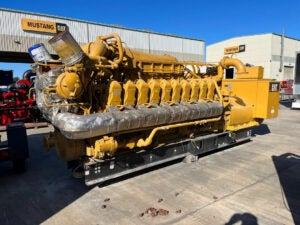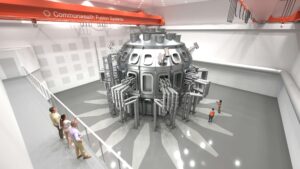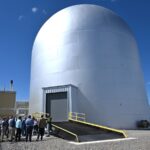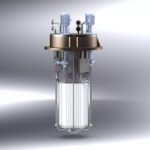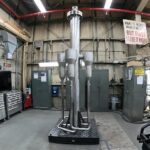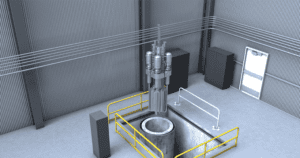
The U.S. Department of Energy (DOE) is inviting private-sector nuclear developers to submit proposals for experiments and demonstrations using its Microreactor Application Research Validation and Evaluation (MARVEL) project. The first-of-its-kind operational test bed for advanced microreactor technologies is now 90% through its final design phase, with key components already under fabrication.
Idaho National Laboratory (INL), a national laboratory managed by Battelle Energy Alliance (BEA) for the DOE, said in a June 16–issued expression of interest request it is seeking cutting-edge concepts from the private sector, national laboratories, and other stakeholders that can leverage MARVEL’s unique capabilities to accelerate the development, testing, and deployment of advanced nuclear reactors and applications. The deadline for submissions is Aug. 30, 2025.
The move marks a big step for INL’s MARVEL project, an 85-kWth/20-kWe microreactor, whose design the DOE unveiled in 2021, soon after it established its microreactor program in 2019. The project is a first-of-its-kind sodium-potassium (NaK)–cooled test reactor designed to serve as a physical test bed for the U.S. Department of Energy’s (DOE’s) advanced microreactor research and development (R&D) ecosystem. Housed at INL’s Transient Reactor Test Facility (TREAT), MARVEL is slated to enable integrated testing of reactor components, autonomous controls, microgrid interfaces, and process heat applications in a real-world nuclear environment. Its compact core consists of 36 uranium hydride fuel rods—each with five fuel meats enriched to 19.75% U-235—moderated by hydrogen and surrounded by a beryllium neutron reflector.
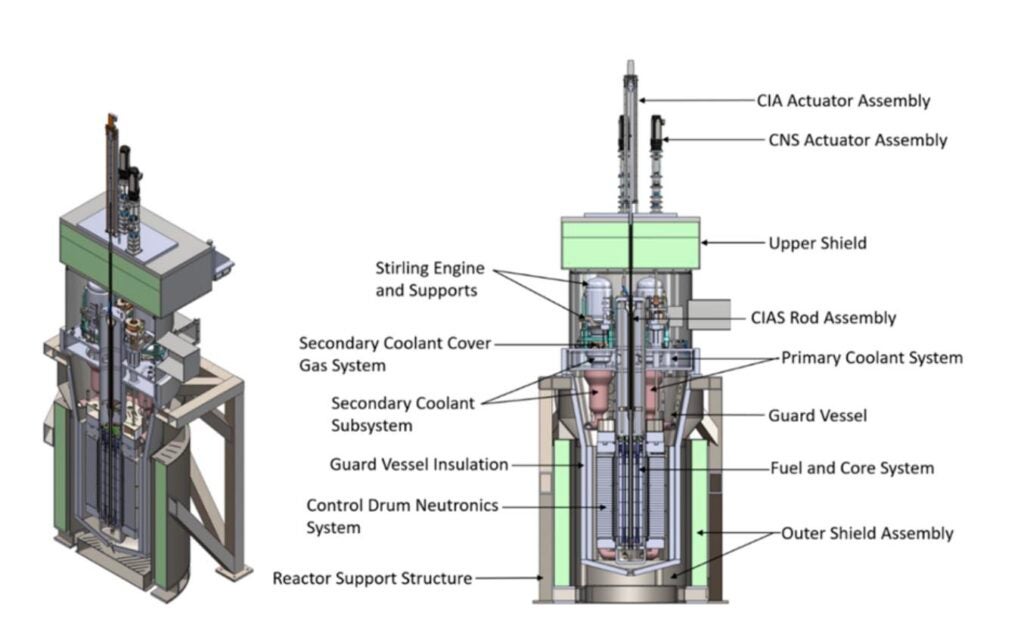
Operational Launch Targeted for Late 2027
The reactor is currently slated to operate on a brief two-year timeline comprising three phases. It is already partway through the first phase, which includes design finalization, environmental permitting, fabrication, and safety preparations. That phase will culminate in fuel loading and initial criticality at its site in INL’s Transient Reactor Test facility (TREAT), which is expected by late 2027 or early 2028.
During Phase 2, which will launch immediately afterward, the reactor will be used to test power production systems and support industrial demonstrations under real operating conditions. “It is anticipated that industrial end users will design and fabricate the equipment and processes they wish to demonstrate during this phase, which is expected to last 2 calendar years,” INL said in a June 2024 utilization plan. “As previously stated, the MARVEL reactor is currently intended to operate on a 2-year timeline. This short window of testing will inevitably require future potential stakeholders to conduct preparatory steps well in advance of the start of reactor operations,” it said.
Phase 3 will focus on decommissioning, including coolant removal, defueling, and disposal of materials and components at INL’s Idaho Nuclear Technology and Engineering Center facilities, with opportunities for post-irradiation examination and end-of-life research.

Seeking Requests for Potential Tests or Demonstrations
In its June 16 expression of interest (EOI) request, INL said it envisions MARVEL as a critical developmental tool. “A primary goal of the project is to provide a platform that the private sector can leverage to mature novel nuclear technologies and demonstrate innovative new use cases for microreactors,” it said.
As described in INL’s official announcement (INL-25-012), responses will inform a two-stage program:
- A feasibility phase to refine the concept in coordination with lab staff (targeted for FY 2026), and
- A physical demonstration phase to be carried out at the reactor (targeted for FY 2027–2028), pending congressional appropriations.
The lab outlined a list of potential applications:
- Demonstrating novel nuclear-generated electricity applications (e.g., nuclear-powered microgrids, or nuclear-powered data centers)
- Demonstrate novel nuclear heat applications (e.g., chemical processing, synfuel production, novel power conversion systems)
- Requesting data access (e.g., analyses conducted, documentations, engineering drawings)
- Operating the reactor in specific modes to validate models (e.g., conducting a specific transient to benchmark codes)
- Deploy advanced instrumentation and control paradigm to nuclear reactors (e.g., semi-autonomous operations, far-field remote operations)
- Demonstrate novel safeguards and security paradigms for nuclear technology (e.g., cyber-secure communications, novel safeguard techniques for microreactors)
“The current MARVEL scope will consist of developing an 85-kWth reactor producing more than 10 kWe of electricity in the first stage of operations,” it noted. “In the second stage, process heat (above 300C) will be provided to end-users specifically for type 2 demonstrations from the list above.”
Submitted EOIs—which will be limited to two-page PDFs—must identify the proposed application area (or suggest a new one), describe the project’s relevance to U.S. nuclear sector advancement, and include technical specifications such as energy output, operating temperature, duration, and reactor conditions. Submissions should also specify any partnering institutions and clarify the level of support required from INL (for example, provision of specific hardware).
A Big Step for MARVEL
“This is an extraordinary opportunity for industry innovators to contribute to the future of nuclear energy,” an INL spokesperson told POWER. “With MARVEL’s potential applications ranging from demonstrating novel nuclear energy applications to novel use of AI for controls. This project is a cornerstone for expediting the development, testing, and deployment of advanced reactors.”

As POWER has reported, although 52 mostly first-of-their-kind reactors have been built at INL since the site was established in 1949, MARVEL will be the first new reactor to be constructed at the site in more than four decades. The MARVEL design is primarily based on existing technology and will be built using off-the-shelf components, allowing for faster construction. High-assay, low-enriched uranium (HALEU) from available research materials will be used to make the fuel, known as TRIGA fuel, an acronym that stands for Training, Research, Isotopes General Atomics.
The project now stands at 90% completion of the final design, and it has entered an advanced stage of development, which entails fabrication of critical reactor components, including the primary coolant system, core internals, and structural supports. “Successful testing of the MARVEL Engineering Demonstration Unit has validated the primary coolant system design and operational principles, marking significant milestones in the project’s progress,” the spokesperson said.
—Sonal Patel is a POWER senior editor (@sonalcpatel, @POWERmagazine).



